Aquarian Age Lecture 11a
Jan 22nd, 2010 by admin
Microcosm Lecture Series Notes
Transitioning Into The Aquarian Age
Lecture 11a of 25 by [R]
Materialism and the Aquarian Age
This talk is called “Materialism and the Aquarian Age” so obviously we’re going to talk about matter. For us as mystical aspirants matter has some peculiar characteristics and some of them are painful, the limitations of matter. So we’ll begin by looking at the mandala and we’ll remember that in the last two talks we talked about the signs and constellations that are trine to Aquarius. We talked first about Gemini and then about Libra.
We said at that time that the equilateral triangle represented spirit—manifest spirit. Un-manifest spirit is indicated by the circle. The relationship between them is like the relationship of a divider’s light or a compass. This is the triangle and the circle is produced out of that triangle. In the same way that the equilateral triangle represents the spirit, the square, (the equilateral square) represents matter. 
Now in astrology and even in the universe, the square represents limitation. It’s limitation like when you feel boxed in or you feel you are blocked, like you have writer’s
block. So it’s pretty much a basic principle. Isaac Newton in his horoscope had squares of Mercury to both Jupiter and Saturn and it was part of his archetypal mental consciousness that he used to understand the universe. One way that he used it was in producing right angle tangents to any point on a curve, and from that he could determine the derivative of the curve by limits between the curve and a straight line. That’s a rather klutzy definition of differential calculus, but it describes what’s going on. The other way he used the square was by taking a curve, any curve, and measuring its area or the area beneath a curve, by breaking the area up into little squares, infinitesimally small squares, and adding them all
up. That was called integral calculus. By the way, I looked up integral and integer [and they’re] from the same source but I don’t know if they’re from the same source as integument.
The integument is the skin. I think that everything is held in the skin. Do you know about that? Okay…Lou do you know whether the root of….? Oh, all right. In both cases he used the square to measure something or to determine something. In both cases it was done by a principle of limits and that is the principle of the square, limiting. Now an ironic thing about this is that my descriptions of the differential and integral calculus are awkward but that points to one of the greatest limits in the world and that’s the limit of language. All of our language, as we know it now, is limited – especially if we try to use it to express feelings or other meaningful things that are just hard to put into words. Most exalted mystics have given up on the idea of trying to describe transcendental experiences and they just say they are ineffable, meaning to say that they can’t be spoken of. Now, there are even very simple material experiences that beggar the language. There are, for example, people who have no abstract concepts at all. It’s a big controversy right now in the study of linguistics. Noam Chomsky
is getting chopped because of people who have no abstractions in their language. For example, there are people who have no abstract concept of color like green. When they try to describe something they’ll say it is like the color of a pore leaf in May or something of that nature. So if they are asked to describe a relative green they can’t do that because they don’t have an abstract concept. They only have the green of things that they concretely know.
There was even a tribe (I don’t know if it exists anymore) about a century ago in South America that had a vocabulary of one word. It was a .com-..(laughter)…inji, and if they were to go out on a hunting expedition, or somebody would be a scout and come back, they would say “inji inji inji inji” and it would be all just one word and you know that inside of them that they’re holding a picture. By the inflections of their voice they are communicating emotions. Do you know what the name of that tribe was? (laughter)
The extremes of language relative to the material world, such as the language like inji that is extremely specific and concrete, having only one word; I doubt that they could describe differential or integral calculus. Even with all kinds of emotions (chuckle) everyone has about integral calculus. In fact, I tried to learn all of integral calculus in one night. I had been cutting class for an entire semester and I, yes, I got a “C” on it but it was basically a gift.
Even simple words in our language have all kinds of inflections and all kinds of connotations and we can work around the limitation of language quite a bit. One of the best usages of language in order to convey something that is abstract is stories. Now the mystics tell us that myths were given to us in the childhood of humanity, and we are instructed to teach our children by stories to inculcate moral and ethical principles and the feeling of right and wrong or good and bad – well before they can understand those things rationally.
It’s intimated by mystics who teach this that if we can be childlike enough, any of us can learn anything by intuition if we have that same accepting kind of consciousness that a child has. Now, in each of these usages of child – in one case talking about the childhood of humanity, and in another case talking about little children and in a third case talking about childlike, the word child means something very different. But in the limitations of matter the same word, child, is used and it’s abstract and takes us away from having to have a very complicated vocabulary, like for describing leaf pores.
In the childhood of humanity, it was the early stages of our human development — in those early stages our consciousness was very simple and we were not at all intellectual like we are now. This is one of the big fallacies. (This is a night for getting rid of fallacies or dropping superstitions or assumptions.) One of the big fallacies of history is that the people of the past were just like us. People talk of things like Lemuria and Atlantis and things like that and they think they were just like us—not so. In spirit, yes, it was the same spirit, but it has undergone quite an evolutionary metamorphosis to get to where we are now. We were much simpler then and we could receive ideas in the form of myths and stories, just like children do in our times. In children’s stories we paint very simple pictures and those simple pictures speak to the child because the consciousness of the child is very ABC-arian. It’s not capable of something very sophisticated.
There is a difference between myths and fairy tales. Myths are for adults and fairy tales are for children. Myths are for people who have developed a cultural intellect, whereas fairy tales are for people who have a more primitive workaday consciousness. I’ll try to give you an example.
In Hindu mythology, the divine spirit, which is the highest attribute of the spirit in all trinitarian consciousness in the mysticism of all parts of the world, the highest part is always invisible. That highest vehicle of the spirit was symbolized in Hindu mythology as a black swan.  The black swan only came out at night which obviously means that the black swan was invisible. But the black swan laid a golden egg and that egg became the universe of light—something much more transcendent than the light that we see now, so the relationship, which in the West we would call the relationship between Divine Spirit and the Life Spirit, was indicated in story form as an invisible black swan laying an egg of golden light.
The black swan only came out at night which obviously means that the black swan was invisible. But the black swan laid a golden egg and that egg became the universe of light—something much more transcendent than the light that we see now, so the relationship, which in the West we would call the relationship between Divine Spirit and the Life Spirit, was indicated in story form as an invisible black swan laying an egg of golden light.
 It’s really saying the same thing as the Bible, where the Bible says no one has known the Father. But Christ says I am the Light because He’s speaking as a representative of the Life Spirit, He says to know me is to know the Father meaning to say the potency of the swan that laid the egg is indicated in the strength of the light. If we take that same myth and we bring it through a huge metamorphosis into common everyday stories, it becomes the myth of the goose that laid the golden egg.
It’s really saying the same thing as the Bible, where the Bible says no one has known the Father. But Christ says I am the Light because He’s speaking as a representative of the Life Spirit, He says to know me is to know the Father meaning to say the potency of the swan that laid the egg is indicated in the strength of the light. If we take that same myth and we bring it through a huge metamorphosis into common everyday stories, it becomes the myth of the goose that laid the golden egg.
It would lay, every day, a golden egg, until the person got greedy and wanted the source of the golden egg and killed the goose. It becomes a very practical worldly-wise story rather than something abstract, and something very profound. Nonetheless in either case it’s useful to people. In the mythological sense, it indicates something that is extremely subtle, a black bird in the night is something really very subtle. In the commonplace folklore, it is: don’t destroy what’s giving you your living.
Now…something in mythology that I’ve never gone into, I’ve wanted to do a series of lectures on the relationship between high mythology and folklore, but I don’t know if I’ll get a chance to do that. Fortunately, very often the folklore echoes on a lower level the higher mythology. Tonight we’re talking about the square which is very rudimentary. Being very rudimentary we’re going to tell a story which is very rudimentary. We’re going to tell the folk story called the two caskets. Now this rendition is extremely abbreviated and everything has been lopped off of it except the part that is essential to the points we’re trying to get to. Some of the running commentary is here. If you’re interested, this is from a series of lectures called Myths of Heroes and Heroines that ran for an entire year, I think there are 30 lectures in it talking about myths about heroes and heroines. Of course you have to get all 30 lectures, you can’t settle for just one.
At any rate, this orphan girl is beautiful inside and out, that’s the lovely way folk stories go. And she lives with an ugly stepsister and with the stepmother. The two of them hate her and make her live in the chicken coop. Step relationships mean that these people really aren’t your parents, and that’s a common theme throughout all of mythology. We have a divine parentage, and we have a human parentage, and we have to learn to forget the human parentage in order to get to the divine. Anyway, one day she does all of the work, but they’re still mean and spiteful towards her. She is drawing water out of the well and her stepsister pushes her into the well. In other words she has a fall and when she gets to the bottom of the well she finds herself in another land. She has passed thru some kind of portal and she is in another dimension.
She sort of wanders around, and eventually she finds her way to the hut of an old woman. Along the way she does good deeds to plants and animals and even to inanimate objects. There’s the lover right there. It’s not necessary; she does these things because she wants to love. The woman feeds her and though she is very hungry she eats only enough to satisfy or to sustain herself, and she cleans up everything when she’s done. She goes to work for the old woman. She works very hard and works very faithfully and in the process she makes friends with cats and birds and all other kinds of animals as she’s going along.
Eventually the old woman tries her and gives her 3 impossible tasks. Initiatory tasks are impossible tasks but they’re not tasks extraneous to our development at all. For example, all of us who want to grow spiritually have to be able to control every thought that we think and that seems almost impossible. One of her tasks was that she had to fetch water using a sieve which is a perfect description of the desire body. You try to control it and everything runs right thru you. Of course her friends help her and tell her to line the sieve with ashes and she’ll be able to bring water and so she does, and she completes all 3 of the tasks that are given to her and the old woman says she’s going to send her home. She says, go up in the attic and select a casket that you want. She’s looking and there’s a huge pile of little caskets, each one different from the last. Some of them are shiny and some of them are big and some are small. Her bird friends tell her that what she should do is take a little black one that is obscure; it’s back in the corner, and she does. The old woman says she can have the casket but you’re not to open it until you follow some observances.
There are always warnings and observances and things you have to do because the spiritual life is a continuous life and if you take something out of continuity it misses its meaning and becomes very destructive. In fact the ancients, when they made symbols, put all their symbols inside a circle – meaning to say that they had relevance only within the complete spirit of the universe. A symbol that was outside the circle was considered materialistic and therefore it was denied the meaning that it really had. But at any rate, after she heeds the warnings and the observances she opens up the casket and it gleams with gold and other treasures and the whole neighborhood is astounded. She gives some of it away and finds out that it replenishes itself.
Now, the stepmother and the sister would like to steal the casket, but they know they can’t do that because the whole neighborhood knows about it, and if the neighborhood knows about it and they steal the casket – you know social censure is a very, very hard thing. Obviously the stepmother and the stepsister represent the world and the world is always saving the appearances, those external material appearances. At any rate they debrief her as to how she got the casket and they decide that the stepsister should do the same thing. So she goes down the well. She does as poorly as the other sister did well. She’s untidy and mean and cruel and lazy and impertinent to the old lady and she’s given 3 trials also and she utterly fails every one.
Finally the old woman is tired of her and wants to be rid of her and says, you can have whatever casket you want and go home. She goes up into the attic and she picks out the biggest one which is bright red. It shows you where she’s at, I drive a red car – (laughs) shows you where I’m at. At any rate, she’s told about the observances and everything, and as soon as she gets home she and her mother throw the casket open. A fire jumps out of the casket and burns the house and the occupants to the ground. Only the chicken coop (the henhouse with the little girl) makes it through the fire. She spent the rest of her days happily living in the henhouse. She had wealth but she probably worked anyway. This theme of boxes, of which there are two in this story, runs throughout folklore and mythology. We have, for example, in Greek mythology, all of the evils and hope coming out of Pandora’s Box. Perseus and Danae are put to sea in a casket. Seth kills his brother, Osiris, by locking him in a casket, and eventually he seals it with hasps, I forgot how many hasps, and he completely covers the casket over with lead.
When Osiris is resurrected from life in the casket his body gets cut into 13 parts. Twelve of the 13 parts are put into caskets and put out into the river. The 13th part, we know what that is, his wife and sister Isis took with them everywhere. Moses was put into the waters of Egypt in a wicker casket. Then there’s the great granddaddy of all the caskets, the Ark of the Covenant, which held Aaron’s rod which budded, the tablets of law, and what else was in there, the manna pot.
Ark of the Covenant – Auch Cathedral
There are many variants and many different kinds of caskets. As universal as it is, the theme of the casket, or the box, is very, very inscrutable. I have gotten a lot of treasures out of it but I have never ever yet to my satisfaction completely solved it. I think there’s a geometric meaning to it that would help me get to the bottom of it, but I don’t have time to work with it now. In spiritual reality things work different than they do in materiality. To understand sometimes the littlest things we have to go to the greatest things. One of Plato’s laws: the larger you look at something the more likely you are to be close to the truth.
The natal horoscope—we’re going to look at the casket on the astrological mandala—is what we are going to do, and we’re going to see what kind of secrets are within that casket. But the natal horoscope is also like a casket only it’s more like a safe. You turn the dials, and it opens up, and you understand what someone’s character is like. In the cosmic mandala, everything is in standard position, so what we then understand are those universal principles that apply to all of us.
The mandala is only two-dimensional. A casket is 3-dimensional. We have to make a 2-dimensional casket which is obviously the square, which is a box in two dimensions. Now, you always start with the first cusp. You start with the cusp of the first house, and of Aries with Mars on 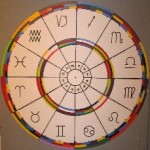 it. If we look for the square, it would be square to the fourth house and the Moon and the next angle of the square would be with Venus and Libra and the seventh house and the final vertex of the square would be at the tenth house with Capricorn and Mars. Mars started out as a foot soldier and becomes a field marshal in Capricorn. It’s exalted there, so the ultimate corner of the square is Capricorn. The Saturnine quality of Capricorn controls the energy, and it controls it by limiting it. Aries would just explode and it would explode in all directions but if you limit the explosion so it happens in a cylinder, as it does in our automobile engines, you have control through limitation, and Saturn is the lord of limitation, so this gives us insight into where we’re going with all of this.
it. If we look for the square, it would be square to the fourth house and the Moon and the next angle of the square would be with Venus and Libra and the seventh house and the final vertex of the square would be at the tenth house with Capricorn and Mars. Mars started out as a foot soldier and becomes a field marshal in Capricorn. It’s exalted there, so the ultimate corner of the square is Capricorn. The Saturnine quality of Capricorn controls the energy, and it controls it by limiting it. Aries would just explode and it would explode in all directions but if you limit the explosion so it happens in a cylinder, as it does in our automobile engines, you have control through limitation, and Saturn is the lord of limitation, so this gives us insight into where we’re going with all of this.
As spiritual aspirants, we recognize that starting with the first degree of Aries the corners of the square represent the turning points in the course of the Sun, the starts of the four seasons. The four seasons are the building process of the cosmos. Four, is usually represented as a number for building. It is natural to see building construction as objectification of an idea. The tenth house (Capricorn) represents the principle of objectification, of objectivity, and of objectives but not of objects.
Plato, who had very unusual tastes, liked two geometric figures but above all of them he liked the cube the best and I think this is because Plato turned out to be a Republican. He turned out to be a conservative and became careful. He liked the stability of the square. When we look in nature, we never see a square that’s standing on a point. The way we have it now, we have it standing on a point.  In this world, in our materialistic concepts, we see things in terms of gravity so we never see a square like this. This is what the French call en ….., it’s up on its tiptoes. What we want to do is see a square in a stable position, in the position that Plato would love, in the way that it would be foundational and fundamental. This image conveys the whole idea of stability. Even a tricycle will tip over, a bicycle certainly will but it’s pretty hard to tip over something that has four corners on it; it’s stable that way.
In this world, in our materialistic concepts, we see things in terms of gravity so we never see a square like this. This is what the French call en ….., it’s up on its tiptoes. What we want to do is see a square in a stable position, in the position that Plato would love, in the way that it would be foundational and fundamental. This image conveys the whole idea of stability. Even a tricycle will tip over, a bicycle certainly will but it’s pretty hard to tip over something that has four corners on it; it’s stable that way.
When we put it on the mandala, the corners fall right in the middle of the fixed signs, which are the most stable—most solid—most rigorous is the word I’m looking for.  The fixed signs represent the deepest and most permanent things in the cosmos. For example, if we look at the sphinx, it lies recumbent on the desert sands and the sphinx is made up of all four animals associated with the fixed signs, the bull, the lion, the eagle, and the human face. It’s a funny thing, when I was doing the notes, I was thinking of the sphinx on the desert sands, I looked down in the notes and saw dessert sands, you have to be careful when you’re dealing with Taurus and associate it with sweets—that I love sometimes way too much. So the stability is with the fixed signs and we have something very foundational. Fortunately for us, the primary vertex is in Taurus but the ultimate one is in Aquarius.
The fixed signs represent the deepest and most permanent things in the cosmos. For example, if we look at the sphinx, it lies recumbent on the desert sands and the sphinx is made up of all four animals associated with the fixed signs, the bull, the lion, the eagle, and the human face. It’s a funny thing, when I was doing the notes, I was thinking of the sphinx on the desert sands, I looked down in the notes and saw dessert sands, you have to be careful when you’re dealing with Taurus and associate it with sweets—that I love sometimes way too much. So the stability is with the fixed signs and we have something very foundational. Fortunately for us, the primary vertex is in Taurus but the ultimate one is in Aquarius.
In this talk and in the next talk we are going to be talking about the relationship of Taurus and Scorpio to Aquarius. We have already talked about the other corner when we talked about some thoughts on altruism and the relationship of Leo to Aquarius. This time we’re going to talk about the Taurus corner.
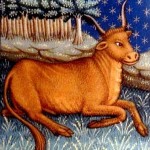 When we’re dealing with something that is very fundamental, something that is very staid it is usually wise to try to be sensible about it and sensible is a very excellent word for Taurus. Taurus often has that consciousness that it won’t deal with something that doesn’t answer to the senses. It’s fundamental, basic knowledge.
When we’re dealing with something that is very fundamental, something that is very staid it is usually wise to try to be sensible about it and sensible is a very excellent word for Taurus. Taurus often has that consciousness that it won’t deal with something that doesn’t answer to the senses. It’s fundamental, basic knowledge.
I went to fundamental basic knowledge about the material world in a very funny way; I walked into a lamppost, twice! If you don’t think that is an awakening experience into the reality of this material world, boy you’ve got another guess coming. It’s just a SHOCK when something like that happens. The most sensible thing that we can do to talk about things is to talk, to start where we are right now so we ask ourselves the question, “Where are we?”
If we put that in technical terms of the mystical philosophy, we are in the chemical region of the physical world. We especially know that we’re in the chemical region of the physical world if we walk into a lamppost. We are in dense physical bodies and those dense physical bodies correspond to the chemical region of the dense physical world. These bodies are made up of all four elements. They’re made of solids, liquids, gases and energy. We need to know something more clearly than that because we need to understand what a human being is in the first place. When we talk about solids, liquids, gases and energy we’re talking only about the physical body and that’s not what a human being is. So when we ask ourselves philosophically, what is there to a human being beyond what we see sensibly, beyond what we see with our physical senses, we relate it to everything we CAN see.
We can see that we have this dense physical form, but so do the stones and the chairs we’re sitting on. We’ve made a distinction, but that distinction is such that we can see that we’re solid physical form and it’s not enough to say that’s the origin of our being. We can say this physical form lives and it’s vital, but the plants do that too, the trees do that. The animals do; they’re alive. The minerals, the so-called non-sentient things, don’t do that. We’ve made a further distinction but we still don’t know what a human being is.
If we go deeper we can say we have feelings; we have emotions; we have desires; we have passions. And that does something to describe what we are but the animals have those things too. The animals have maybe more primitive desires and passions but they DO have them. But when we get to the last of the fixed signs, we come to the description of what a human being is, we are intelligent beings. We can reason our way through things and know what is true and what is not true; we have waking intelligence.
That is what humans have always been described as, rational animals. So we can see an answer to that very basic simple question, the question that Shakespeare asks, what is a man? Forget the sexism. We see that a man is a being who has form, life, emotion and reason—reason that opens to the truth. Moreover, it helps us to see what we are and how we are composed, keeping our character intact. Now we can also use this definition of a human being to settle our petty quarrels with the universe. It goes beyond just a simple rudimentary description.
Taking this rudimentary description we can ascertain several things. We know that in several ways we are building bodies and using bodies and in them we are developing character and that the whole process is of a fourfold composition, we’re working on four different fronts at the same time. The second thing that we can see from this rudimentary division or looking at how a human being is, we are wakingly spiritually self-conscious. We are intelligent, and in that we are free from the material things through which we gain our consciousness. We are beyond them and that’s what we’re trying to get at. We’re at the beginning of an understanding of materialism and now we want to go further with that. [Illustrations were not part of the lecture.]


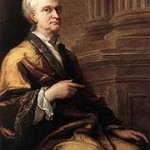


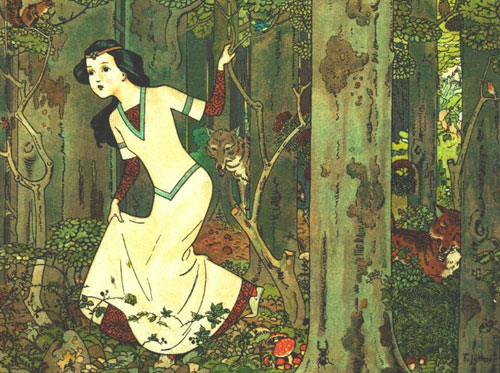
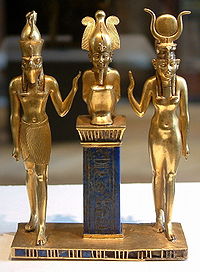

Keep posting stuff like this i really like it
Thank you. There are several other lectures in the series under Lecture Notes in the right-hand column of Categories and more to come. EC